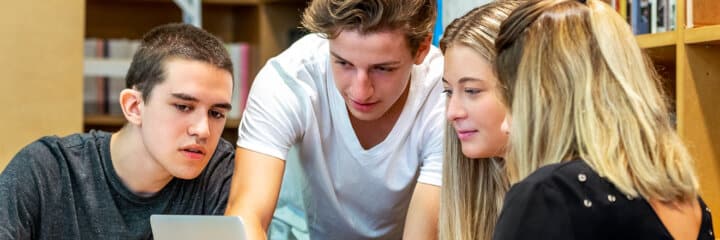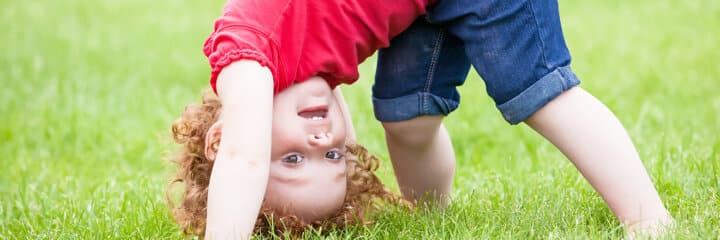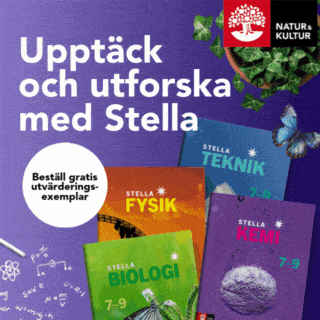GeoGebra, Enhancing Creative Mathematical Reasoning
Elever som själva konstruerar lösningsmetoder till problembaserade uppgifter lär sig matematik bättre än elever som får en färdig metod att följa, visar Jan Olsson.
Jan Olsson
Dr Carina Granberg, Umeå universitet Professor Johan Lithner, Umeå universitet
Professor Kristina Juter, Högskolan Kritianstad
Umeå universitet
2017-04-26
Dynamisk mjukvara + resonemang = Lärande i matematik
GeoGebra, Enhancing Creative Mathematical Reasoning
Institutionen för tillämpad utbildningsvetenskap
Dynamisk mjukvara + resonemang = Lärande i matematik
Det övergripande syftet med avhandlingen har varit att nå insikter i hur man kan designa en didaktisk situation inklusive en dynamisk programvara (GeoGebra) för att stödja elevernas lärande genom matematisk problemlösning och kreativt resonemang. En bärande idé har varit att elever som själva konstruerar lösningsmetoder till problembaserade uppgifter lär sig matematik bättre än elever som får en metod att följa. Resultaten visar att GeoGebra är ett stöd vid konstruerandet av lösningsmetoder och att elever då också resonerar kreativt. Det vill säga, de skapar en för dem en ny resonemangssekvens som innehåller en lösningsmetod som stöds av argument förankrade i matematik. Idén med att elever på egen hand konstruerar lösningen på uppgifter har även belysts genom att jämföra med elever som löser uppgifter där de får vägledning till lösningsmetoden. Resultaten visar att elever som får en lösningsmetod inte resonerar kreativt, de utnyttjar inte GeoGebras potential att stödja ett undersökande arbetssätt, och de lär sig mindre av den matematik som ingår i uppgifterna. Denna avhandling består av 4 artiklar och en kappa.
GeoGebra, Enhancing Creative Mathematical Reasoning
The thesis consists of four articles and this summarizing part. All parts have focused on bringing some insights into how to design a didactical situation including dynamic software (GeoGebra) to support students’ mathematical problem solving and creative reasoning as means for learning. The four included articles are:
I. Granberg, C., & Olsson, J. (2015). ICT-supported problem solving and collaborative creative reasoning: Exploring linear functions using dynamic mathematics software. The Journal of Mathematical Behavior, 37, 48-62.
II. Olsson, J. (2017). The Contribution of Reasoning to the Utilization of Feedback from Software When Solving Mathematical Problems. International Journal of Science and Mathematics Education, 1-21.
III. Olsson, J. Relations between task design and students’ utilization of GeoGebra. Mathematical Thinking and Learning. (Under review)
IV. Olsson, J., & Granberg, C. Dynamic software, problem solving with or without guidelines, and learning outcome. Technology, Knowledge and Learning. (Under review)
Background
A common way of teaching mathematics is to provide students with solution methods, for example strategies and algorithms that, if followed correctly, will solve specific tasks. However, questions have been raised whether these teaching methods will support students to develop general mathematical competencies, such as problem solving skills, ability to reason and acquire mathematical knowledge. To merely follow provided methods students might develop strategies of memorizing procedures usable to solve specific tasks rather than drawing general conclusions. If students instead of being provided with algorithms, are given the responsibility to construct solution methods, they may produce arguments for why the method will solve the task. There is research suggesting that if those arguments are based on mathematics they are more likely to develop problem solving and reasoning-skill, and learn the included mathematics better. In such didactic situations, where students construct solutions, it is important that students have instructions and tasks that frame the activity and clarify goals without revealing solution methods. Furthermore, the environment must be responsive. That is, students need to receive responses on their actions. If students have an idea on how to solve (parts of) the given problem they need to test their method and receive feedback to verify or falsify ideas and/or hypotheses. Such activities could be supported by dynamic software. Dynamic software such as GeoGebra provides features that support students to quickly and easily create mathematical objects that GeoGebra will display as visual representations like algebraic expressions and corresponding graphs. These representations are dynamically linked, if anything is changed in one representation the other representations will be altered accordingly, circumstances that could be used to explore and investigate different aspects and relations of these objects. The first three studies included in the thesis investigate in what way GeoGebra supports creative reasoning and collaboration. These studies focus questions about how students apply feedback from GeoGebra to support their reasoning and how students utilize the potentials of GeoGebra to construct solutions during problem solving. The fourth study examine students’ learning outcome from solving tasks by constructing their methods.
Methods
A didactical situation was designed to engage students in problem solving and reasoning supported by GeoGebra. That is, the given problems were not accompanied with any guidelines how to solve the task and the students were supposed to construct their own methods supported by GeoGebra. The students were working in pairs and their activities and dialogues were recorded and used as data to analyse their engagement in reasoning and problem solving together with their use of GeoGebra. This design was used in all four studies. A second didactical situation, differing only with respect of providing students with guidelines how to solve the task was designed. These didactical situations were used to compare students’ use of GeoGebra, their engagement in problem solving and reasoning (study III) and students’ learning outcome (study IV) whether the students solved the task with or without guidelines. In the fourth study a quantitative method was applied. The data from study IV consisted of students’ results during training (whether they managed to solve the task or not), their results on the post-test, and their grades. Statistical analysis where applied.
Results
The results of the first three studies show qualitative aspects of students solving of task with assistance of GeoGebra. GeoGebra was shown to support collaboration, creative mathematical reasoning, and problem solving by providing students with a shared working space and feedback on their actions. Students used GeoGebra to test their ideas by formulating and submitting input according to their questions and hypotheses. GeoGebra’ s output was then used as feedback to answer questions and verify/falsify hypotheses. These interactions with GeoGebra were used to move the constructing of solutions forward. However, the way students engage in problem solving and reasoning, and using GeoGebra to do so, is dependent on whether they were provided with guidelines or not. Study III and IV showed that merely the students who solved unguided tasks utilized the potential of GeoGebra to explore and investigate the given task. Furthermore, the unguided students engaged to a larger extent in problem solving and creative reasoning and they expressed a greater understanding of their solutions. Finally study IV showed that the students who managed to solve the unguided task outperformed, on posttest the students who successfully solved the guided task.
Conclusions
The aim of this thesis was to bring some insights into how to design a didactical situation, including dynamic software (GeoGebra), to support students’ mathematical problem solving and creative reasoning as means for learning. Taking the results of the four studies included in this thesis as a starting point, one conclusion is that a didactical design that engage students to construct solutions by creative reasoning supported by GeoGebra may enhance their learning of mathematics. Furthermore, the mere presence of GeoGebra will not ensure that students will utilize its potential for exploration and analysis of mathematical concepts and relations during problem solving. The design of the given tasks will affect if this will happen or not. The instructions of the task should include clear goals and frames for the activity, but no guidelines for how to construct the solution. It was also found that when students reasoning included predictive argumentation for the outcomes of operations carried out by the software, they could better utilize the potential of GeoGebra than if they just, for example, submitted an algebraic representation of a linear function and then focused on interpreting the graphical output.
Relaterade länkar

Juridik
 Gy–Vux
Gy–Vux
Fysisk aktivitet och motorik i förskolan
 Fsk
Fsk


